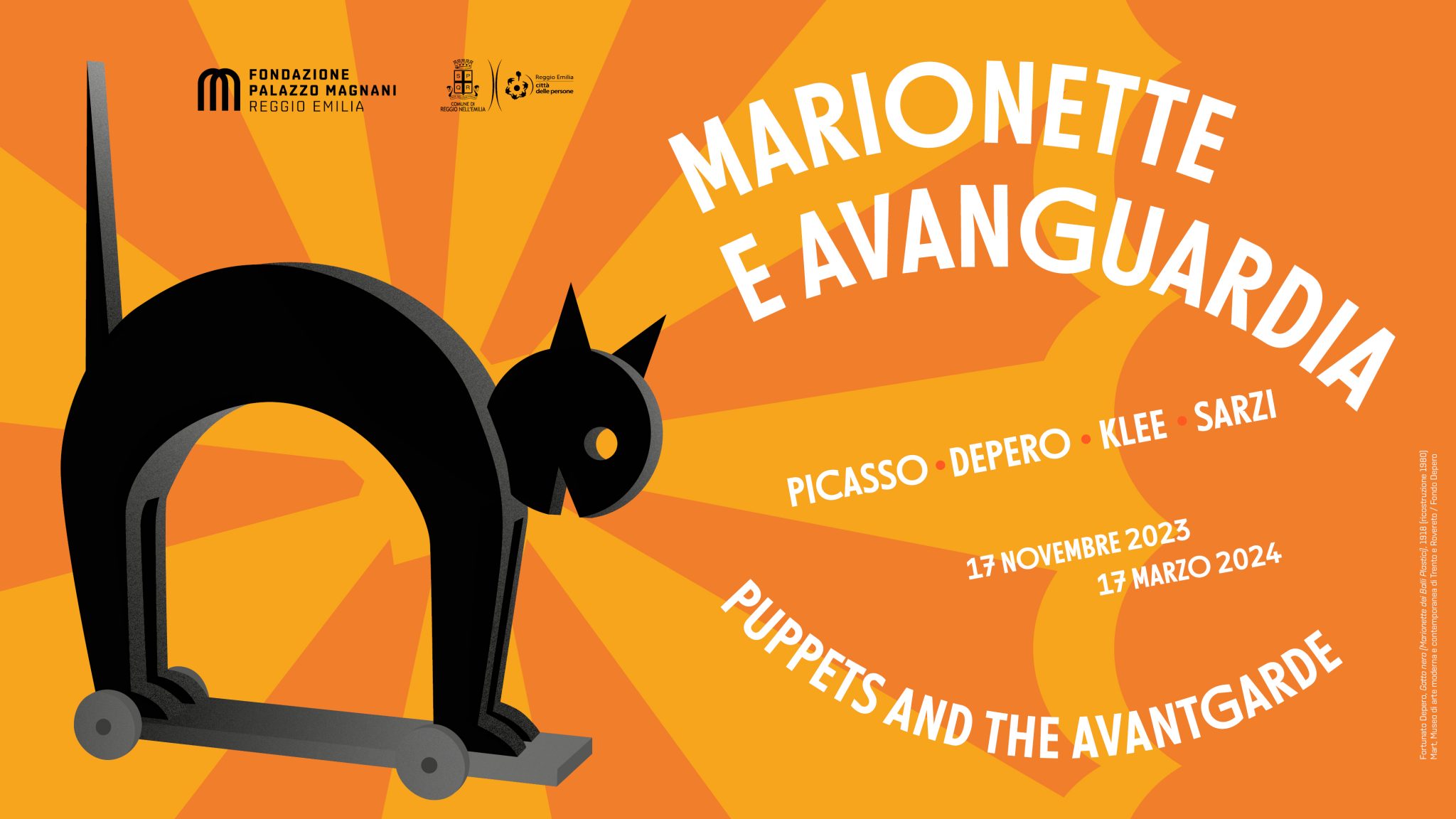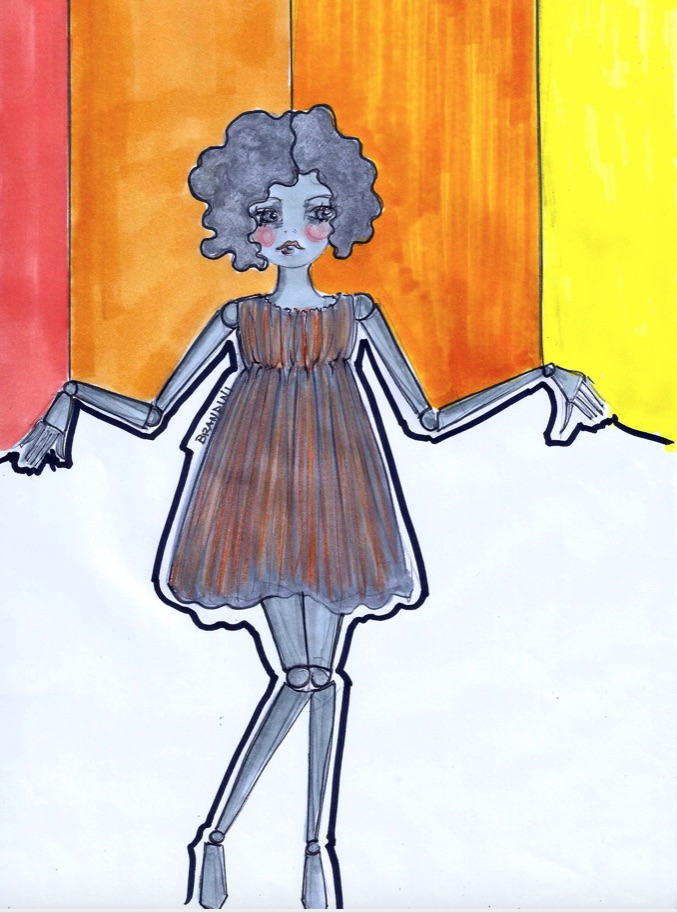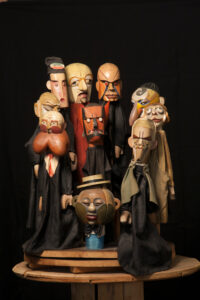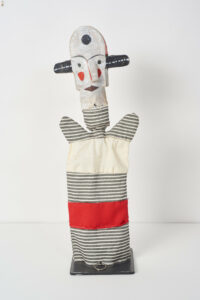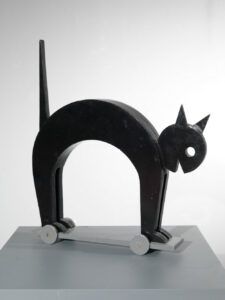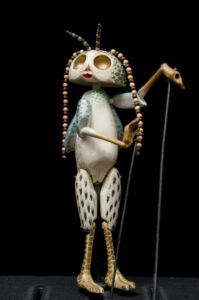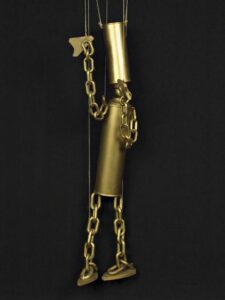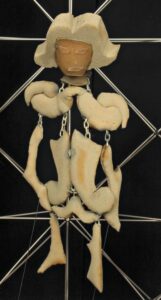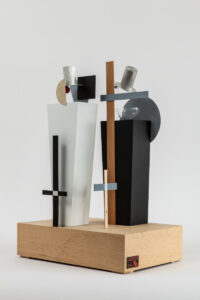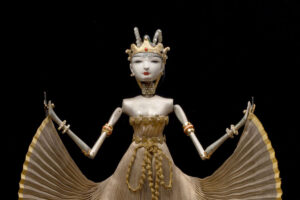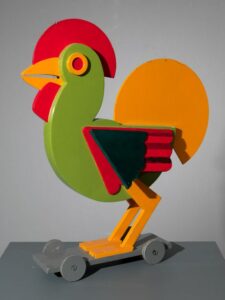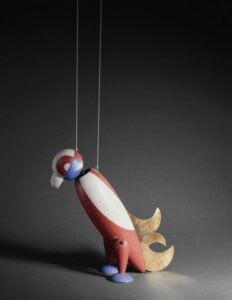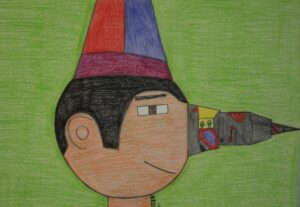Exhibition poster
“Puppet” by Beatrice Brandini
At the Palazzo Magnani Foundation in Reggio Emilia, a truly spectacular exhibition is on display until 17 March 2024: “Marionettes and Avant-gardes. Picasso. Depero. Klee. Sarzi, edited by James M. Bradburne, member of the Scientific Committee of the Palazzo Magnani Foundation.
Enrico Prampolini Ten futurist puppets, 1922
The exhibition develops around the concept of the “fourth wall”, i.e. the ability of the show staged to emotionally involve the spectator. When a marionette or puppet breaks the fourth wall, it gains the public’s trust, nullifying the division between entertainment and world, art and life.
Paul Klee untitled, 1925
Marionettes, in English the term puppets, have always fascinated artists, who have used this medium not only as an educational potential of “figure theatre”, but also to experiment with their own creativity, where the possibilities are infinite.
Fortunato Depero Black Cat 1918
Satirists used puppets as a revolutionary means to attack the political establishment, a puppet can say what often, especially a few decades ago, the actor in flesh could not say-do. Puppets fascinated futurists such as Enrico Prampolini or Fortunato Depero, but also painters such as Sironi, Carrà and de Chirico.
Richard Teschner Zipzip 1913
Puppets and games also became a central element of the Bauhaus, with Paul Klee, Oskar Schlememr, Sophie Täuber, or protagonists of the Revolution when Lenin and his wife Natalia Krupskaya decided to fight illiteracy through the use of puppets.
Two puppets of Otello Sarzi (the golden one with chains is the Experimental Marionette)
The exhibition begins by welcoming visitors with life-size costumes designed by Pablo Picasso for Parade, a choreographic ballet that Sergej Djaghilev’s Ballets Russes staged in Paris in 1917. It then continues with a crowd of puppets manipulated from above, puppets from below), ancient examples such as Pulcinella and Harlequin from the Commedia dell’Arte, up to those of great artists of the twentieth century, among these those of the adopted Reggio Emilia Otello Sarzi who made puppets with experimental materials stand out. The exhibition is completed with a tribute to this extraordinary artist who created works, including monumental ones, for the theatre, cinema and television.
El Lissitzky “The Gravediggers”, 1923
Richard Teschner, Nawang Wulan, 1912 (Detail)
Finally, two stages are set up in the rooms on the ground floor, allowing all visitors to try their hand at “figure theatre”. Thanks also to the collaboration with the Carlo Colla puppetry company of Milan and the 5T Association of Reggio Emilia, a program full of shows/performances interpreted by puppetry professionals will be performed every weekend for the entire duration of the exhibition.
Fortunato Depero, Hen marionette, 1918
Sophie Taeuber – Arp, Parot
“I think the main goal of the exhibition is to open up a space for the imagination where a stick can become a horse, a dragon or a flute again.” These are the (WONDERFUL) words of James M. Bradburne, scientific coordinator of the exhibition.
Pinocchio, the most famous puppet in the world by my son.
I absolutely recommend you visit it.
Good life to everyone!
Beatrice


